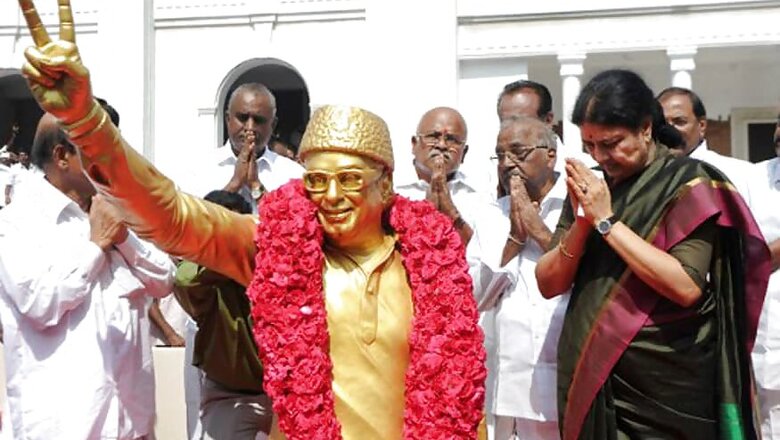
views
It was indeed the context in which he arrived in the political scene in Tamil Nadu that made MG Ramachandran establish himself as immortal.
The DMK, whose emergence as ruling party in 1967, had run its course. The non-Brahmin rhetoric had shown itself up even in CN Annadurai’s time when 44 landless agricultural labourers who also happened to be Dalits were burnt alive in Kezhavenmani in the then Thanjavur district.
MGR, very much a part of the DMK, found himself marginalised in the party and wanted to bid farewell and just then asked for the accounts of the party’s funds; Karunanidhi thought he was ‘helping’ MGR by announcing his expulsion from the DMK.
MGR too seemed reconciled for a life in the tinsel world until the then CPI leader, M Kalyanasundaram goaded him into forming a new party and calling him the ‘Puratchi Thalaivan’ (Revolutionary leader).
It was only a matter of time for MGR to wrest power from Karunanidhi; and the issue, indeed, was corruption.
An enquiry commission headed by Justice Sarkaria had found credible evidence against Karunanidhi. The story, however, will be incomplete if the part about MGR’s rise and consolidation is not told.
The Emergency certainly meant an assault on the Constitution and its core. MGR, however, was not concerned about that and was perhaps the only one of those leaders who won the election in 1977 without having had anything to do against the Emergency.
And having wrested power in Tamil Nadu, he seemed to take John Meynard Keynes with all seriousness. Let it be stressed here that there is no evidence, whatsoever, of MGR having cited Keynes or the principles of deficit financing.
The fact is MGR had the luxury of being the Chief Minister of a state that had set out on industrial development as well as induction of technology in the farm sector and thus achieving a robust economic growth (in the same way as some other parts where the green revolution had changed the contours of agriculture) and the foundations of a welfare model laid by K Kamaraj.
He showed the acumen to build on them and expand the scope of the schemes. The noon-meal scheme for school children was the most substantive of these and it was emulated by many others across India.
MGR also made sure that he was not shackled by precepts or ‘isms’ and this helped his AIADMK make up with the Congress party.
The reversals his party suffered in the general elections to the Lok Sabha in 1980 – the party won just two seats out of 39 after the DMK struck an alliance with the Congress (I) – got MGR work on his survival strategy and this got him to send J Jayalalithaa to the Rajya Sabha and with a brief to get the Congress (I) to an alliance with the AIADMK.
It was done and the party retained power in Tamil Nadu in 1984, when elections to the Lok Sabha and the State assembly were held simultaneously. MGR’s formula was a small share of seats (just one thirds of the 39) for the AIADMK in the Lok Sabha and two thirds of the 234 assembly seats to his party in the assembly.
The Congress (I), then, was a party with about 16 per cent voteshare in Tamil Nadu and MGR could strike such an arrangement with ease because he did not pretend to be tied to what is termed as ideology.
Well, he did not come into politics with a baggage and he did not accumulate any in his life as a leader. He was, however, committed to governance and that perhaps is what made him click and at a time when the DMK, to which he belonged, seemed to delude itself that its rise was the consequence of its sub-nationalism.
MGR, instead, was convinced that the people expected the government to ensure governance and also that governance meant ensuring the people their basic needs. And it was Keynes at work.
(The author is a Chennai-based political commentator, Views are personal)


















Comments
0 comment